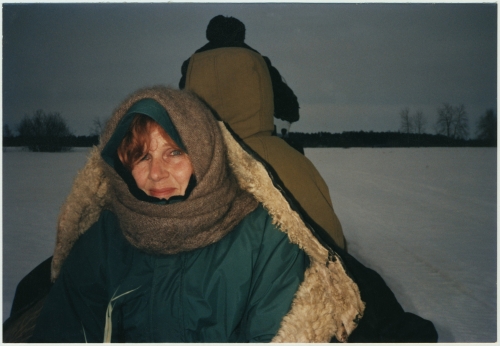BERTIEN VAN MANEN
Amsterdam, 27 May 2024 – Yesterday, at the age of 89, the renowned Dutch documentary photographer Bertien van Manen has peacefully passed away in the presence of her family.
Bertien van Manen started her career in 1975, at forty years of age, as a fashion photographer. Inspired by Robert Frank’s The Americans, depicting a raw side of the United States, she turned to documentary photography. Bertien travelled the world, taking photos of people she met and often befriended. Fluent in Russian, she was one of the first documentary photographers to enter the former Soviet Union after the fall of the Iron Curtain. Her photographs of Russian people, made during five years travelling the former Soviet Union, are documented in the books Hundred Summers Hundred Winters (1994) and Let’s sit down before we go (2011). Van Manen travelled and documented much of the world, including Eastern Europe, the Western Sahara and the Appalachians. Her travels trough China are captured in the book East Wind West Wind (2001).
Van Manen enjoyed a Dutch privileged upbringing in Heerlen, where her father was an engineer in the State coal mines. She felt closely connected to the coal miners, whose homes and families she found to be warm and friendly. Later, she documented mine workers in different places, including Sheffield, Siberia and the Appalachians. She often stayed in close contact with her subjects, sending them photographs and exchanging letters.
Bertien van Manen is known for her intimate yet “raw” photography, showing people as they are, without any retouching or amending any apparent irregularities in her photos. She used a snapshot camera, to allow closer contact and to be able to look her subjects in the eyes while photographing. Van Manen has been a pioneer and an example for many.
Bertien van Manen has left a legacy of photographic works, exhibited in the Museum of Modern Art, New York, the Maison Européenne de la Photographie in Paris, the Stedelijk Museum Amsterdam and the Fotomuseum Winterthur, among others. Bertien’s work is found in major public collections.
The Bertien van Manen Stichting (foundation) will safeguard Bertien’s legacy, in close collaboration with the galleries representing her. We will miss her dearly.
For more information and high res images please contact Iris Bergman, chair of the Bertien van Manen foundation. Email: [email protected] Telephone: 0031646020871
Bertien van Manen is represented by Annet Gelink Gallery in Amsterdam, Robert Morat Gallery in Berlin, Yancey Richardson Gallery in New York and Galerie In Camera in Paris.
